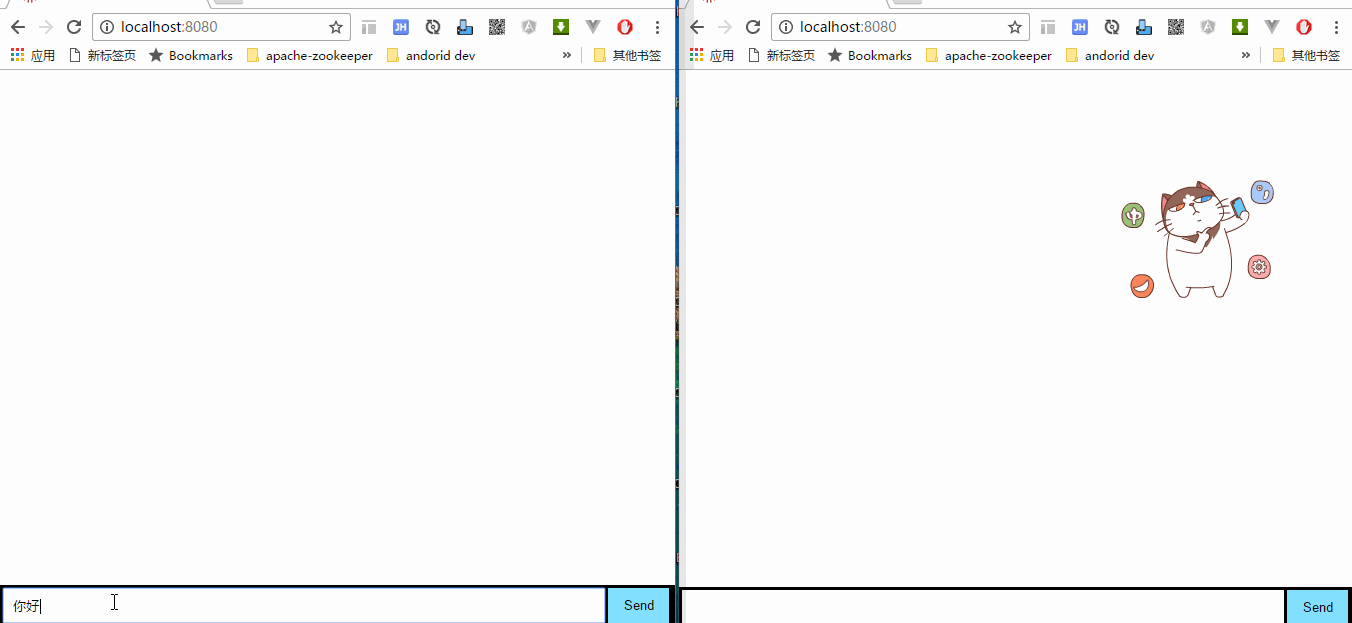前言
socket.io: 包含对websocket的封装,可实现服务端和客户端之前的通信。详情见官网 (虽然是英文文档,但还是通俗易懂)。
Notification: Html5新特性,用于浏览器的桌面通知,只有部分浏览器支持。
通过nodejs+Socket.io+Notification实现服务端往浏览器客户端发送自定义消息。
若有问题可加群264591039与我讨论。
转载请注明出处!
开发前提
本地安装nodejs以及npm
对nodejs以及express框架有一定了解。(本篇将和官方文档一样,采用express 4.10.2)
环境搭建
- 新建一个文件夹notification(以下操作都在该文件夹的根目录进行)
- npm初始化package.json文件
npm init
- 安装express(指定版本4.10.2,没有试过其他版本,感兴趣可以试下)
npm install --save express@4.10.2
- 安装socket.io(本人安装的版本是1.7.3)
npm install --save socket.io
编写代码
构建通信环境
在根目录下新建一个index.html(注:index页面的样式来自socket.io的官方示例)
1 2 3 4 5 6 7 8 9 10 11 12 13 14 15 16 17 18 19 20 21 22
| <!doctype html> <html> <head> <title>Socket.IO Notification</title> <style> * { margin: 0; padding: 0; box-sizing: border-box; } body { font: 13px Helvetica, Arial; } form { background: #000; padding: 3px; position: fixed; bottom: 0; width: 100%; } form input { border: 0; padding: 10px; width: 90%; margin-right: .5%; } form button { width: 9%; background: rgb(130, 224, 255); border: none; padding: 10px; } #messages { list-style-type: none; margin: 0; padding: 0; } #messages li { padding: 5px 10px; } #messages li:nth-child(odd) { background: #eee; } </style> </head> <body> <ul id="messages"></ul> <form action=""> <input id="m" autocomplete="off" /><button>Send</button> </form> </body> </html>
|
新建一个index.js文件,并在js文件中构建相应的对象和变量,创建监听端口为8080 的服务器,以及添加映射到index.html的路由。
1 2 3 4 5 6 7 8 9 10 11 12 13
| let express = require('express'), app = express(), http = require('http').Server(app), io = require('socket.io')(http); app.use(express.static(__dirname + '/public')); app.get('/', function(req, res){ res.sendfile('index.html'); }); http.listen(8080, function(){ console.log('listening on port 8080'); });
|
运行 node index.js 用浏览器打开http://localhost:8080 成功的话即可看到index.html页面的内容。
在index.js的监听端口代码上方添加socket.io的监听事件,监听用户连接的connection。
1 2 3
| io.on('connection', function(socket){ console.log('a user connected'); });
|
创建监听Event事件:notification,并用emit向客户端推送消息
1 2 3 4 5 6 7
| io.on('connection', function(socket){ console.log('a user connected'); socket.on('notification', function(msg){ console.log(msg); io.emit('notification', msg); }); });
|
在index.html页面中的上方引入socket.io文件,并用emit向服务器提交数据以及监听事件notification,接收服务器推送的消息
注意,引入socket.io的方式在运行node index.js之后才有效果,直接打开index.html是找不到这个文件的
1 2 3 4 5 6 7 8 9 10 11 12 13
| <script type="text/javascript" src="/socket.io/socket.io.js"></script> <script src="http://code.jquery.com/jquery-1.11.1.js"></script> <script> let socket = io(); $('form').submit(function(){ socket.emit('notification', $('#m').val()); $('#m').val(''); return false; }); socket.on('notification', function(msg){ console.log(msg); }); </script>
|
浏览器打开http://localhost:8080 后,在input框中输入,点击发送,在nodejs运行的控制台可以看到如下信息:
1 2 3 4
| a user connected //以下数据是输入框输入的数据 hello test 测试
|
实现自定义消息推送
完整代码:
1 2 3 4 5 6 7 8 9 10 11 12 13 14 15 16 17 18 19 20 21 22 23 24 25
| <script> let socket = io(); $('form').submit(function(){ socket.emit('notification', $('#m').val()); $('#m').val(''); return false; }); socket.on('notification', function(msg){ notice(msg); //若允许通知,待输入消息后监听变化就会调用通知方法 }); Notification.requestPermission(function(permission) {}); //询问浏览器是否允许通知 function notice(msg) { let _notification = new Notification(`消息通知`,{ body:`${msg}`, icon:'http://localhost:8080/23539868.jpg' }); setTimeout(function(){ _notification.close(); //设置5秒后自动关闭通知框 },5000); } </script>
|
运行截图
完整示例代码见GitHub

